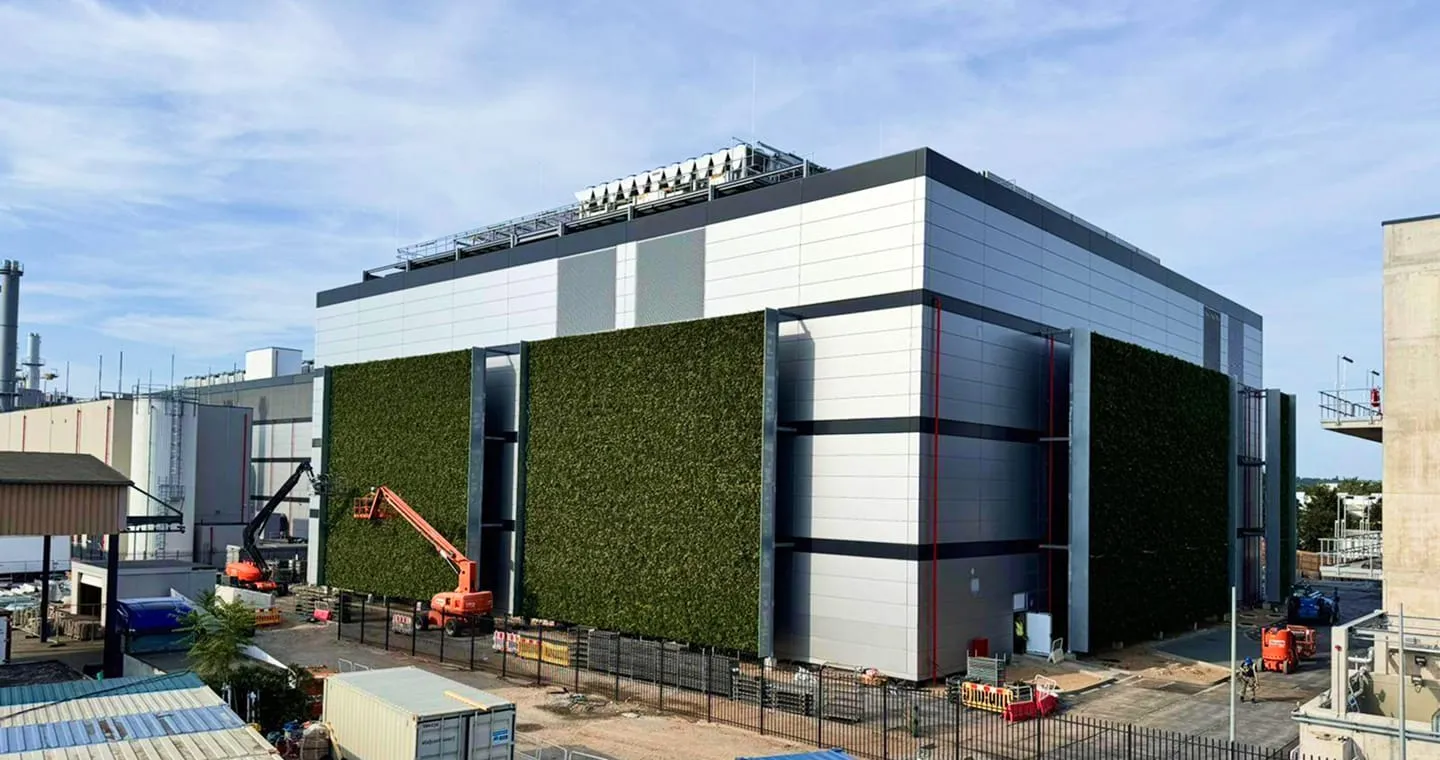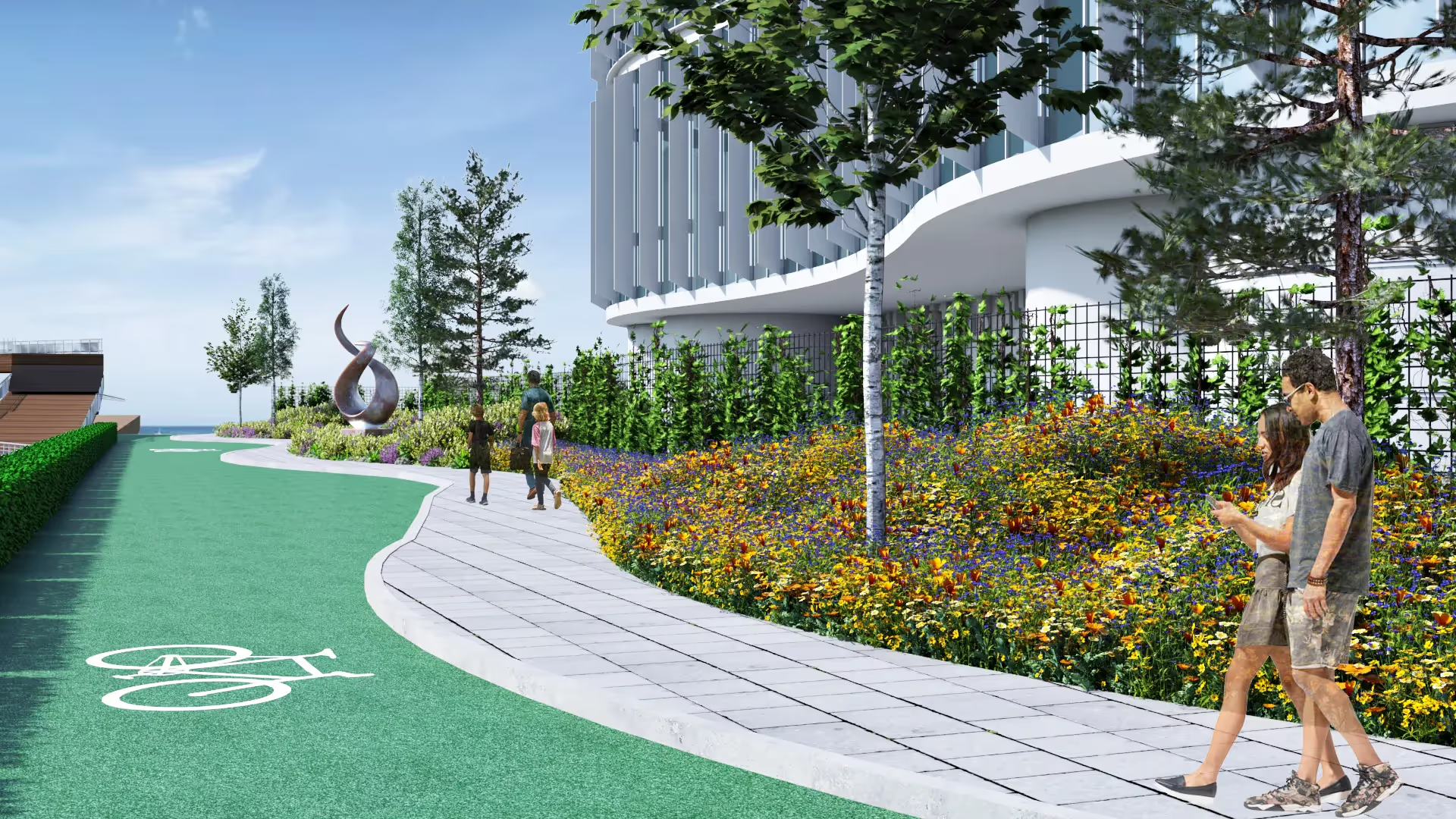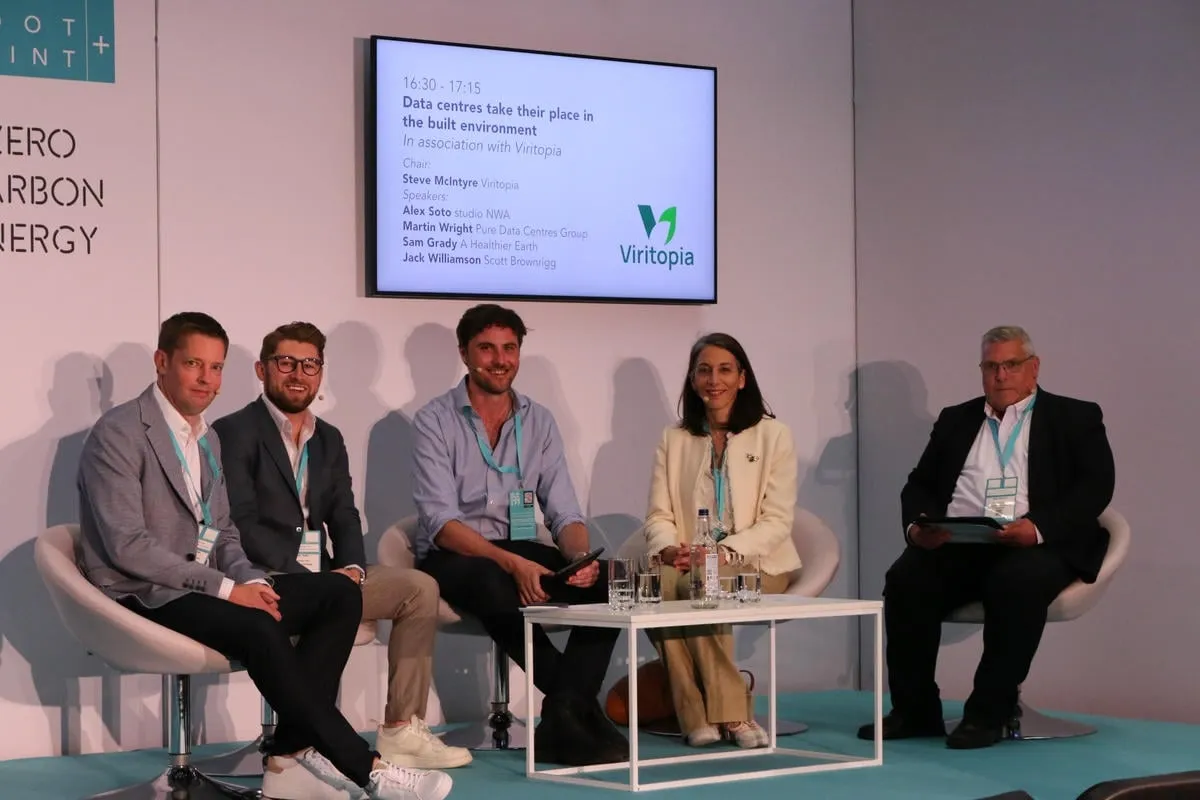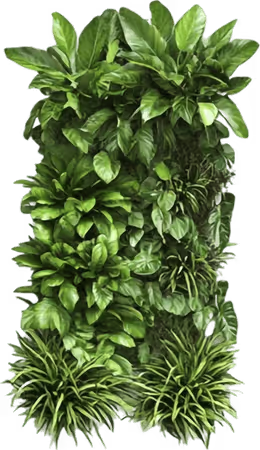Green walls for data centres
We’re reimagining data centres as spaces that support biodiversity, mitigate climate impacts, and uplift local communities. Join us in bringing the benefits of nature into a tech-forward environment.



Delivering sustainable data centres in partnership with







How green infrastructure supports regulatory compliance
Green infrastructure like living walls introduce nature back into developed land, providing a number of benefits that help data centres comply with the Energy Efficiency Directive (EED) and the Corporate Sustainability Reporting Directive (CSRD).
Temperature regulation
A living wall shades the building behind it, naturally regulating indoor temperatures. Outside of the building, the foliage helps cool the surrounding area, reducing the urban heat island effect.
Energy efficiency
By providing natural insulation, living walls help reduce the need for artificial heating and cooling. This reduces a data centre’s carbon footprint, supports compliance, and can deliver cost savings.
Air quality
Living walls act as natural air filters, removing pollutants and providing cleaner air. In data centres, improved air quality supports equipment performance and employee well-being.
Carbon capture
The vegetation and soil in Viritopia’s living walls absorb CO₂ and generate oxygen. When combined with carbon offset initiatives, they help move your project closer to carbon neutrality.
Biodiversity
Soil-based green façades can reintroduce native species lost to development and create microhabitats for wildlife. They add ecological value by maximising space that would otherwise go unused.
Community engagement
Green data centre construction offers an opportunity to leave a positive impact by educating communities on the benefits of nature and creating a space the community can feel proud of.

Sustainable solutions for data centres
With 20 years of green infrastructure experience and proven living wall technology, we offer an end-to-end service to help you achieve your sustainability goals.

Living wall installation
Viritopia designs, plans, installs, and maintains living walls for data centres across Europe. Just 1m² of plant coverage can remove 2.3kg of CO₂ from the air every year —so imagine the benefit of covering an entire façade.


Sustainability consulting
Sourcing support to meet sustainability regulations, or wish to do something even greater? Our consultants can help you navigate requirements and explore innovative options, like biochar, to maximise your impact.
Green data centre projects
From early-stage strategy to full-scale installation, we’ve helped clients create sustainable data centres. See our recent work.
FRA10
This premium data centre based in Frankfurt has been planted with over 50,000 plants that improve air quality whilst creating an aesthetically pleasing façade.

Data Centre 01
Amongst what was proposed was a variety of native trees, plants and shrubbery to give the site a biophilic and ecological value.

Hear from our clients
We’re proud to partner with sustainable companies that live by their values.

Frequently asked questions
Find answers to common questions about our living walls.
Still have questions? Reach out to our team.
How do living walls support EED and CSRD complaince?
Living walls can support EED compliance by improving natural cooling, which reduces a building’s HVAC needs and energy use. For CSRD, they can help reduce your carbon footprint and support biodiversity, which can be reported as part of your sustainability performance. Living walls may also help meet your local planning conditions.
Do you work on data centre projects in my region?
Our consultants can assist with planning and design for projects in any region, and we offer installation and maintenance in over 30 countries. View the locations we serve.
How early should I start planning for a living wall?
We can get involved before or after your project achieves planning, but starting early delivers the best results. Engaging sustainability consultants in design lets you explore all of your options and select the ideal materials for the project — potentially saving on costs, construction time, and even embodied carbon.
Can a living wall work for our data centre?
Yes. We offer multiple build-up options — such as steel frames and insulation panels — to suit different building types, including designs that support air circulation where needed. Reach out to request a complimentary feasibility report to see what’s possible for your data centre.
Learn more about data centre sustainability
Explore our resources for data centre owners, planners, and contractors.

How Data Centres Are Driving Innovation in Sustainable Infrastructure Solutions

Green Infrastructure for Carbon-Neutral Data Centres: Boosting Thermal Performance

The Science of Carbon Sequestration in Ecological Architecture


Bring out the full potential of your data centre
Technology and nature can work hand-in-hand. Reach out to explore the benefits a living wall could bring to your data centre project.



